10 Northern Thai Foods You Must Try
The food of Northern Thailand is a mix of traditional recipes which is governed by its use of local herbal ingredients, some which give the food its distinct flavors that hit notes from bitter to sour. This cuisine is a result of a combination of indigenous origins, lingering influences of past conquests at the hand of the Burmese, and storied history of an influential Chinese Immigrant community. While many may believe Thai Food starts with Pad Thai, you do yourself a disservice if you do not allow your palate to explore these distinct recipes this province has to offer. Original recipes that are gradually beginning to disappear as the westernization of the local appetite seems to advance towards fraudulent cheeses, hot dogs and KFC.
The following compiled list is just a small introduction into what Chiang Mai has to offer. It is a novice-friendly list structured for a western palate. Now, while some of the ingredients might be off-putting to some, I promise you that if you had not read about it, you wouldn’t even know it was in the recipe. Hopefully, this list will encourage some of you to venture off the beaten path in your gastronomic adventures through Northern Thailand.
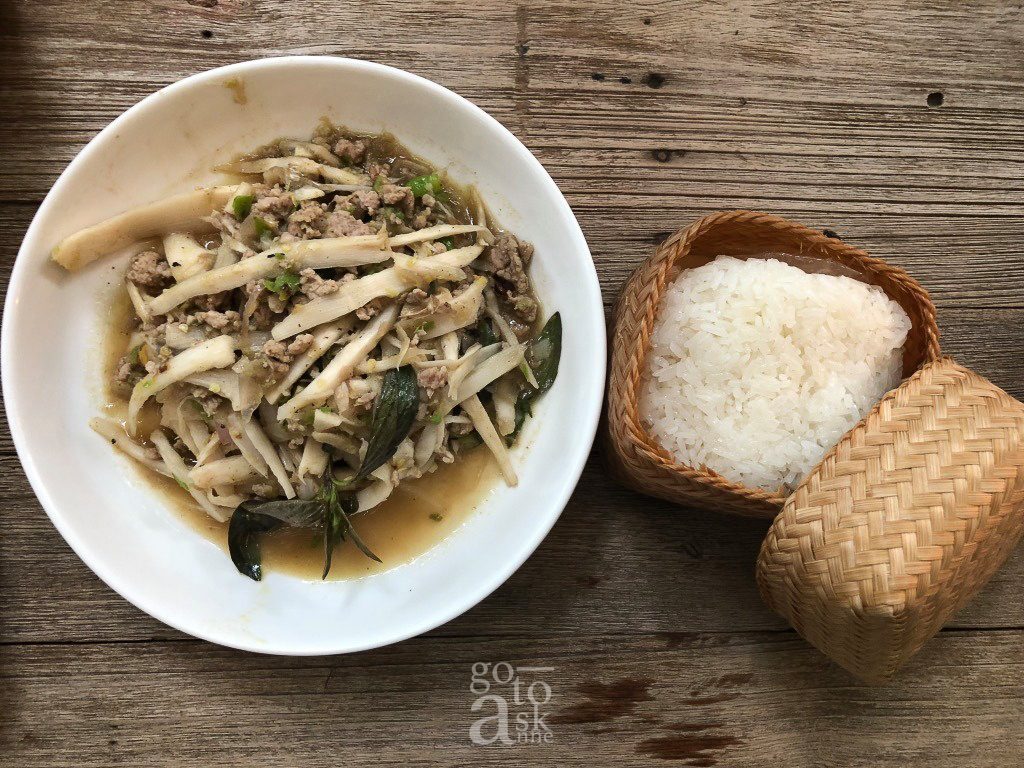
Khao Niaw (sticky rice)
Although probably the most well-known food on the list, Khao Niaw needed to make the cut is a Northern Thai cuisine essential. This glutenous rice is a local favorite that unlike its counter is not boiled. Khao Niaw is cooked by steam. When looking up recipes, online, many say to use a bamboo basket, but in Northern Thailand, they mainly use a wooden steamer called “Hai Nung,” which looks like a wooden bucket. The bamboo basket is the way it is cooked in Issan.
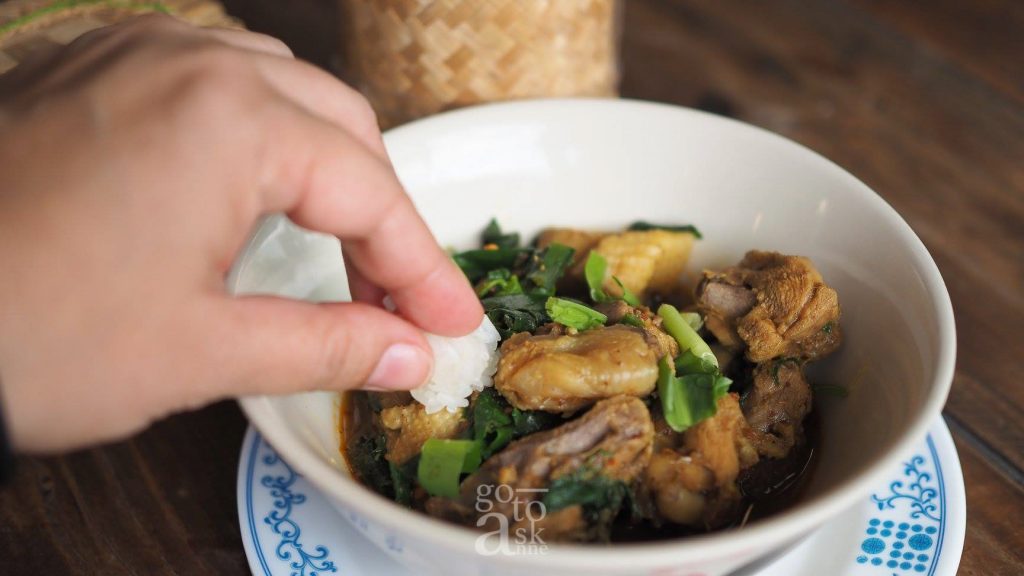
Khao Niaw is exclusively eaten using your hands and is essential in getting the full experience of many of the foods listed below. Using your thumb and index finger, you will shape the sticky rice into a bowl shape which is ideal for mopping up curries and spicy dips.
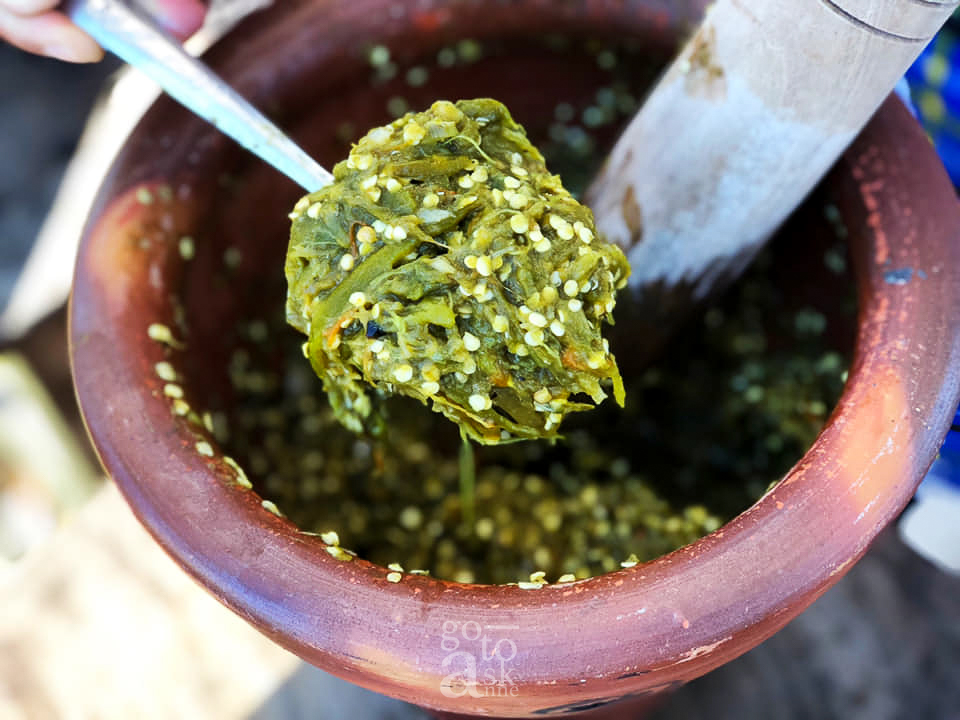
Naam Phrik Num
This northern Thai-style dip of blackens the chilies on a charcoal grill giving it a distinct smoky flavor. It is then combined in a mortar with shallots, fish sauce, and garlic. The texture of this dish is a bit stringy since it receives a little more than rough mashing. There are also variations in ingredients that, some make without the fish sauce while others can pour it on. Naam Phrik Num is traditionally served with parboiled veggies, pork, and sticky rice, but I find that it goes pretty much with everything. I especially like it with Moo Yang and various fried foods. You can easily find this at any local market, where you can construct your own meal.
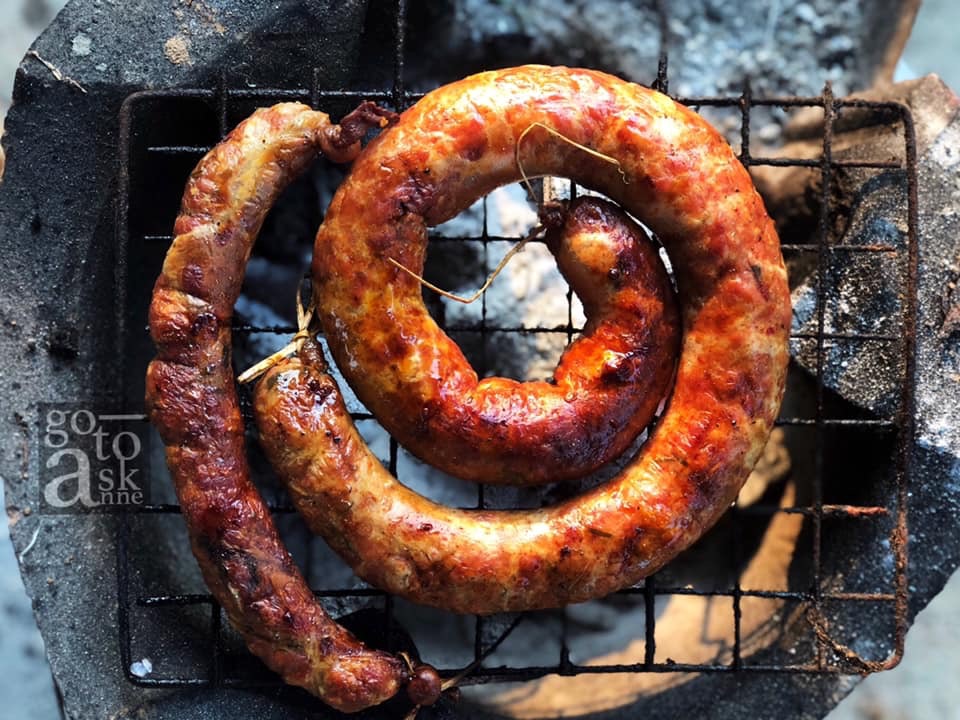
Sai Ua
This deceivingly complex dish is another that you will be easily spotted at the local markets or little stalls on the streets. You’ll usually see this being cooked on a charcoal grill which is the cause of its exterior features. This a dish that has taken days to prepare, and even before it hits the grilled, it goes through the process of being cooked by steam. This a new method of cooking the original version would sit on a low heat grill.
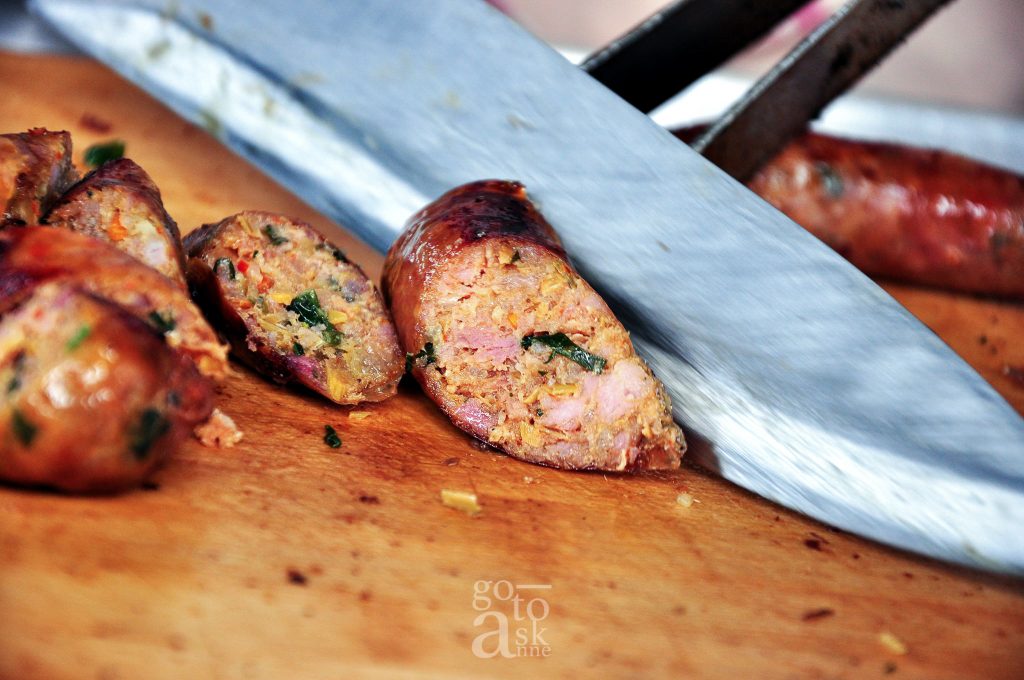
Sai Ua is unlike anything you’ve tried before packed with spices and herbs; your taste buds will thank you for trying. Long, circular coils of pork sausage the outer casing is charred reddish brown, and when sliced it makes for a beautiful cross-section revealing a golden-brown color with specks of green and yellow. The coarsely minced pork gives it a meaty texture while the herbal aromas will tantalize all your senses. The prominent flavors of this Northern Thai sausage are yellow turmeric root, lemongrass, kaffir lime leaf, chili and a bit of galangal. Try this with some Khao Niao (sticky rice) and Naam Phrik Num. You can thank me later.
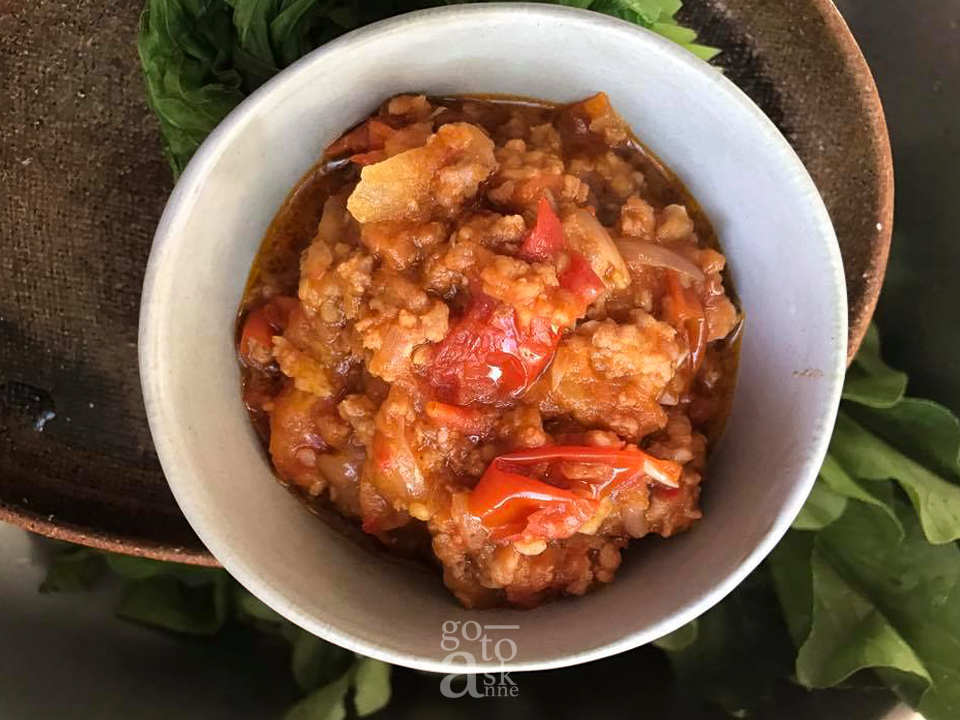
Naam Phrik Awng
This recipe is composed of a blend of dry chilies, garlic, shallots, coriander roots or coriander seeds, shrimp paste, ground pork, and tomatoes and served with grilled fermented bean sheets, crushed and sprinkled on top. The dip itself looks like Bolognese sauce, thick and with chunky tomatoes. It’s served in a bowl alongside a platter of parboiled slices of cabbage, long beans, eggplants, sticky rice, and fried pork cracklings.
The flavor profiles of this dish are a balance of savory, spicy, tart, and salty. Naam Phrik Awng gets the tart flavors from the cherry tomatoes that are used to make this dish. However, the flavor profiles can range from garlic to mild to spicy, depending on the shop. This particular dip is made without Thai fish sauce flavor but instead uses another staple that usually goes under the radar for most people, Kapi Kung aka shrimp paste.
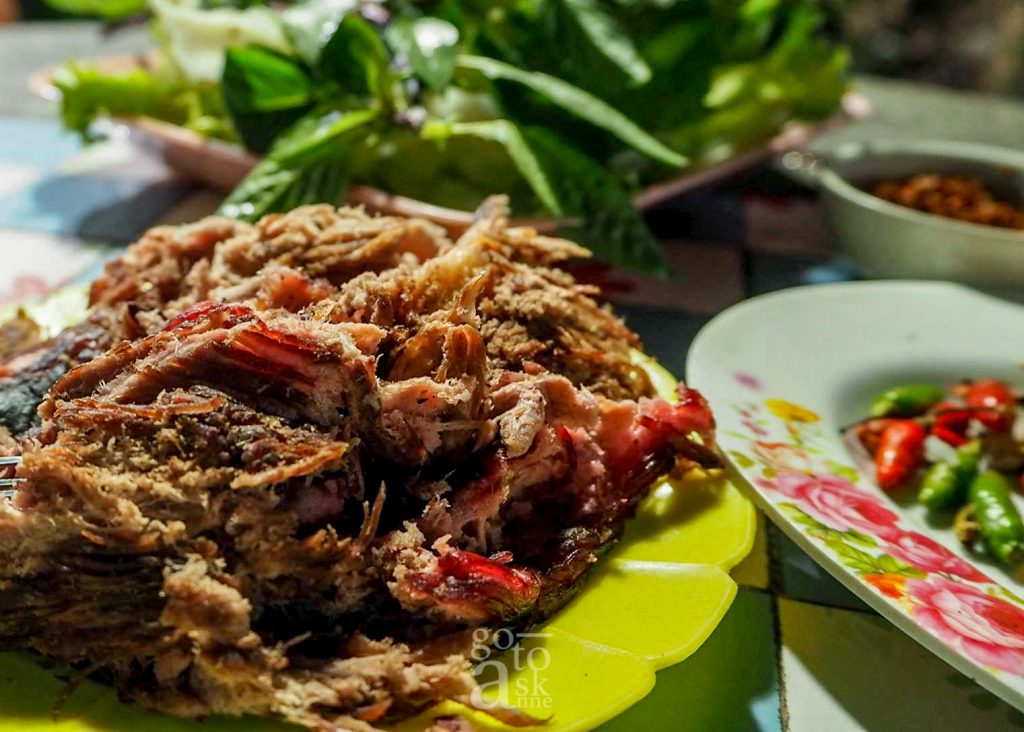
Jin Tup
A relatively straight forward and simple dish. Jin Tup beef, marinated in fish sauce and salt, cooked on a charcoal grill and hammered into an unrecognizable form. The meat spends hours on coal-fueled grilled before it ends up on your plate. Served to you is dehydrated pounded meat with a concentrated smoky beef flavor and its addicting. Jin Tups mouthfeel reminds me of beef jerky. When you bite into it, you get these strands of savory, fish-saucy, salty beef, which goes perfectly with a Thai beer.
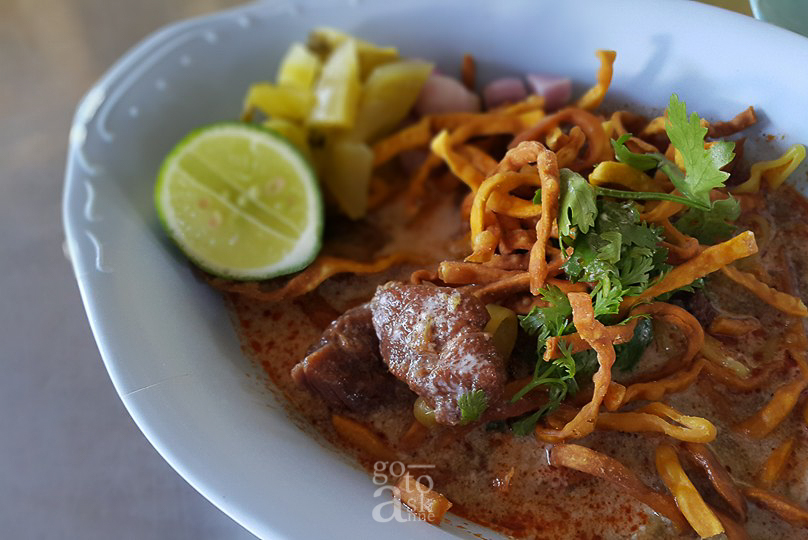
Khao Soi
This bowl of aromatic, texture-rich curry soup with boiled and crunchy fried wheat noodles, pickled mustard greens, shallots, sweet coconut milk and tender beef or chicken, khao soi is north Thailand’s most famous and well-traveled staple. When you read that list of ingredients out loud, you can help but think to yourself, how does this even work. However, it does and quite wonderfully. The pickled greens cut right through the rich semi-sweet curry (depending on where you go), while the shallots add its unique flavors into the mix without overtaking the dish. The textures they add to compliment the crispy noodles. Khao soi is a robust sensory dish. The flavors, the textures, the aromas a bowl of this Thai staple still excites me to this day.

Khao kan jin (Khao Ngiew)
Khao kan jin consists of minced pork, pork blood and long grain rice steamed in a banana leaf and drizzled with garlic oil. The rice is first cooked and let cool down before salt, sugar, and oil for the deep fried garlic are mixed in. The blood is combined with lemongrass, which improves the flavor and aroma. The blood is mixed in with the rice and minced pork. It is then wrapped and steamed in a banana leaf. When served, the meal is topped with crispy deep-fried garlic, garlic oil, and chilies.
I know blood can be a frightening food for travelers, but if I didn’t mention there was blood in the dish, you wouldn’t even know. I actually didn’t even know there was blood in this dish until the fifth time i had it! However, there is nothing to worry about since it is fully cooked. The savory characters and that garlic oil is just so delightful.
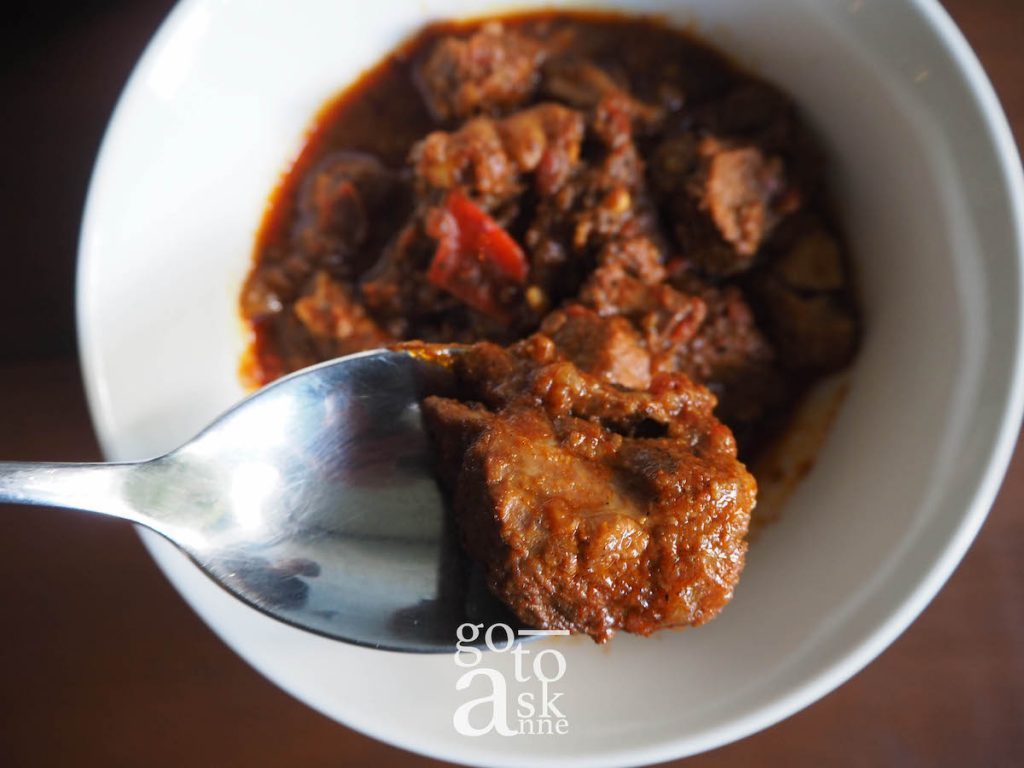
Kaeng Hang Lei (Lay)
Is a dish a Burmese (Myanmar) Indian influenced dish. When the Burmese conquered and controlled Northern Thailand for over 200 years, Kaeng Hang Lei became one of the staples in Northern Thai cuisine. Kaeng Hang Lei has the consistency of a stew. The curry is a blend of several spices such as ginger, tamarind, turmeric, and garlic (also use masala powder) but the main ingredients a chunk of pork belly. Which is where this dish derives its rich and fatty flavors. Kaeng Hang Lei is on the mild spectrum of spiciness and is highlighted by the chunks of tender pork. It is a dish that is perfect for those who cannot handle spicy foods all too well but still, would want to experience some authentic Northern Cuisine.
Hang Lei (lay): Consists of the following spices listed below. Coriander seeds (เม็ดผักชี)
Turmeric powder (ขมิ้น)
Caraway (ยี่หร่า)
Black pepper (พริกไทยดำ)
Nutmeg (ลูกจันทน์)
Cinnamon (อบเชย)
Fenugreek seed (ลูกซัด)
Star anise (จันทน์แปดกลีบ)
Fennel seeds (เทียนข้าวเปลือก)
Cardamom (ลูกกระวาน)
Sand Ginger ( เปราะหอม)
Cloves (กานพลู)
Long Pepper (ดีปลี)
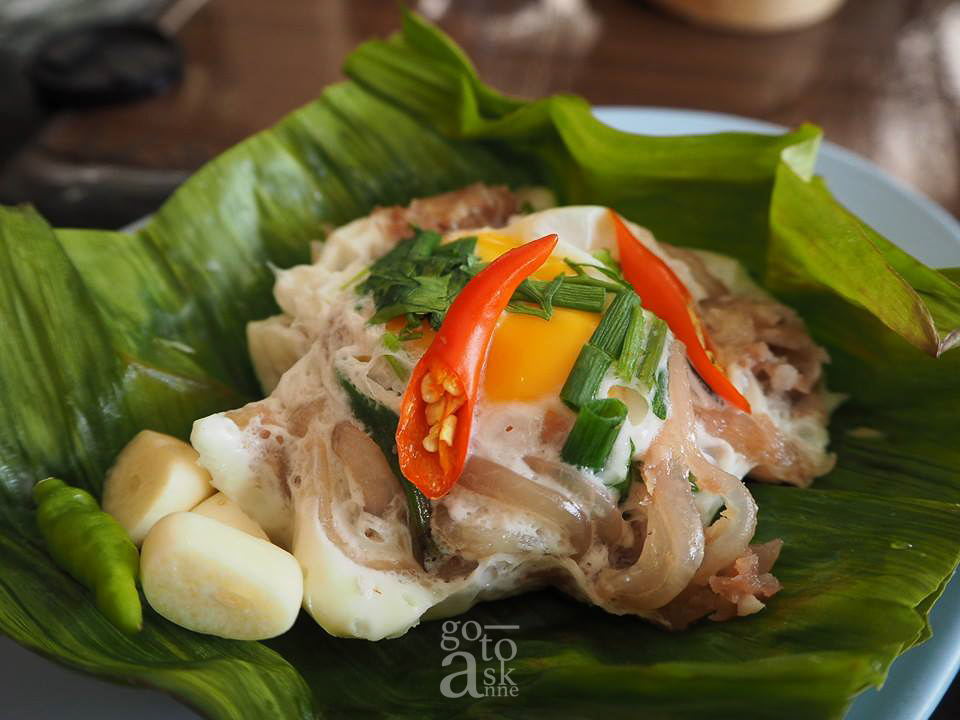
Jin Som
While not the most attractive dish on the list, the tart flavors, and meatiness, of this recipe, is one that should not be missed by food explorers. Jin Som is a fermented food that with this recipe is rooted in a time where food was scarce, and people could not afford to let anything going to waste. It is a mix of mince raw and lean pork with thin strips of boiled pig skin mixed with sticky rice. It is then seasoned with chunks of garlic, salt, and then tightly wrapped in banana leaves. The sugars from the rice act as the catalyst, causing the meat to ferment and turn sour over a period of 2 days.
Its distinct tartness comes from the lactic acid fermentation process that helps this dish stay preserved. A good version of this dish will have your palate swimming in decadence. Jin som can be eaten raw but can also be grilled. For those weary of trying this dish, I would recommend trying the grilled version first. There also other recipes were Jin som is added into a stir-fried meal. However, you decided to eat, and it will be something you will remember.
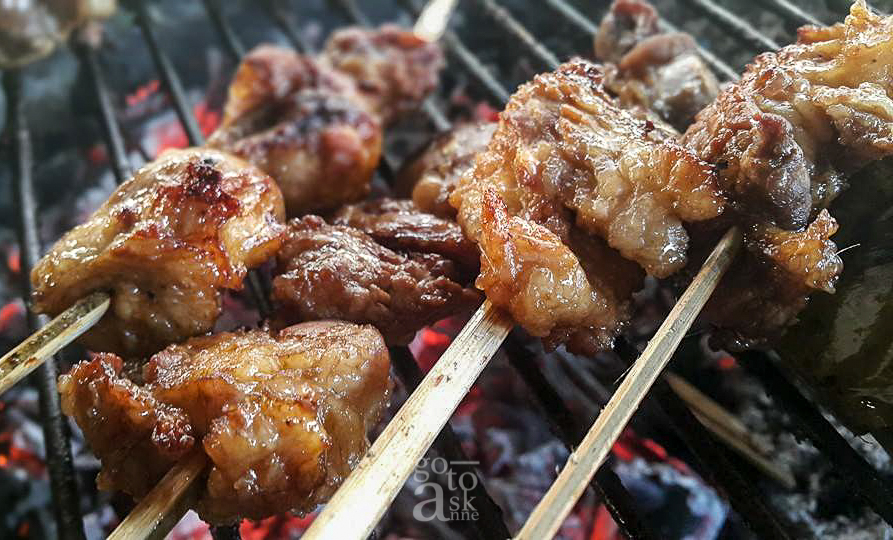
Mu Yaang
Grilled pork, neck, leg, belly, and tail, these are the parts that you will regularly see on a Thai charcoal grill. Cuts like the leg include a trifecta of skin, fat, and meat. When grilled the skin crisps on the outside, while the layer of the fat renders and the meat becomes delicate and lush. Combine this with nam phrik num and some sticky rice, and you will be in gastronomic heaven.
The marinade for the pork is very minimal compared to other dishes. It’s a simple combination of fish sauce and white soy sauce. Because of the minimal marinade, Mu Yang is usually served with a dipping sauce. A sauce that you might see regularly is one made from tamarind, sweet palm sugar, and salt and ground chili peppers. Pair this dish with a cold beer and its a perfect dish for the hot summer nights
Article written by William Higuera from Gotoaskanne.com

